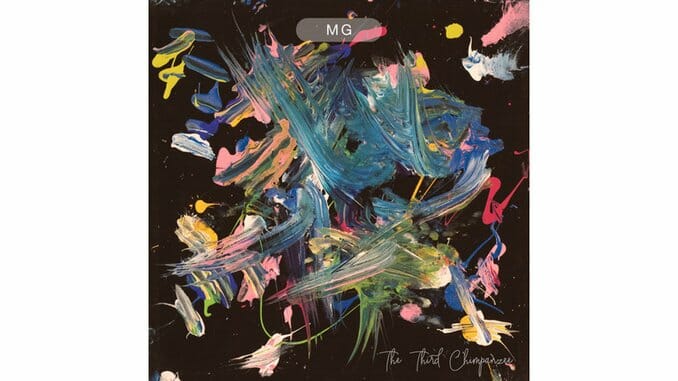With His New Mini-Album, Martin Gore Aims for the Animal That Resides in the Human Heart
More refined—if less adventurous—these days, the Depeche Mode maestro provides a glimpse into his working process with The Third Chimpanzee

As the principal songwriter in Depeche Mode, Martin Gore has had an incalculable impact on the landscape of electronic music, but he hasn’t done so without help. Gore’s best-known songs, of course, have been inhabited by Depeche Mode frontman David Gahan, who has consistently infused them with a rare combination of melodrama and raw authenticity, not to mention the powerful allure of his voice alone. Likewise, the moodiness that has always been so integral to those songs has largely come courtesy of other hands on deck: producer and Mute Records founder Daniel Miller at first, followed increasingly by the band’s one-time resident producer/multi-instrumentalist Alan Wilder who, for a 10-year stretch from 1983 to 1993, supplied the lion’s share of the sonic architecture for classic Depeche Mode albums like Music for the Masses and Violator.
Which is not at all to diminish the value of Gore’s contributions. In fact, one of Gore’s greatest strengths lies in his ability to let others like Gahan and Wilder go all-in on bringing his material to life. But even on his own—whether putting his own electro-pop stamp on a set of pop/rock covers for his 2003 full-length solo debut Counterfeit2, or unveiling his own instrumentals for his 2015 sophomore full-length MG—Gore has managed to summon the essential spirit and tone of Depeche Mode’s sound, if in more rudimentary form. For fans who find themselves craving those familiar DM ingredients, only without a strong narrative thrust, there’s probably no better place to turn than MG, which gives listeners a kind of assembly-line view of the individual motifs that comprise Gore’s vocabulary.
On his new EP The Third Chimpanzee, Gore once again reaches for his usual trademarks: the clanging of synthetic marimba-like textures (“Howler,” “Capuchin”), siren wails that conjure images of sentient machines crying out in torment (“Howler”), throbbing bass interlaced with ticking beats (“Mandrill,” “Vervet,” “Capuchin”) and—let’s not forget—melody (all of the above). Absent are the pinging synth arpeggios that mimic nylon guitar strings. (Or is it vice-versa?) Either way, Gore does splash the tracks with some typically spartan electric guitar flourishes. Longtime followers of Gore’s work, though, might find themselves thinking they’ve heard all of this before—many times. They wouldn’t be wrong.
At first, listeners will have to squint for indications that Chimpanzee offers anything that Gore didn’t already serve up on MG. And, at just five tracks to MG’s 16, it’s easy to get the impression that Gore, admittedly at something of a creative ebb from being stuck at home all day lately, was content to half-ass it through a handful of instrumentals just to fight off boredom at a time when he wasn’t feeling inspired to write any lyrics. Perhaps Gore didn’t have anything to say here? Well, appearances can be deceiving. Where each MG track consisted, more or less, of a repeating pattern that had yet to be stripped down to a hook and re-assembled into a proper backing track for a song, The Third Chimpanzee integrates those ideas into seemingly simple pieces of music. To put it another way, you can look at MG as a complete album’s worth of the demos Gore would present for a Depeche Mode record, whereas The Third Chimpanzee stands on its own.
Sure, longtime fans will find themselves playing an involuntary game of “name that tune” with all the elements here that could have been lifted straight from the DM repertoire. Over time, though, these new tracks reveal a delicate interplay of moving parts. On “Mandrill,” for example, Gore puts together a rhythmic jigsaw puzzle out of deep-pitched bass pulses, tap-dancing percussion, cymbal slurs, echoing thunder claps, synth gurgles, ghostly fumes and an alternating three- and five-note “guitar” hook. Not only do all the parts fit perfectly, but they also push and pull against one another so as to induce a not-unpleasant sensation of being spun around and tugged on by multiple pairs of hands—but that’s only if you stop to pay attention. The more immediate reaction is to want to dance.
-

-

-

-

-

-

-

-

-

-

-

-

-

-

-

-

-

-

-

-

-

-

-

-

-

-

-

-

-

-

-

-

-

-

-

-

-

-

-

-








































